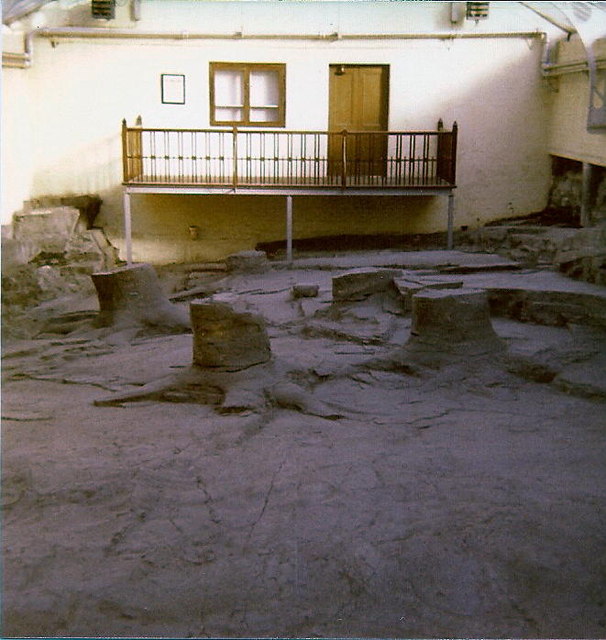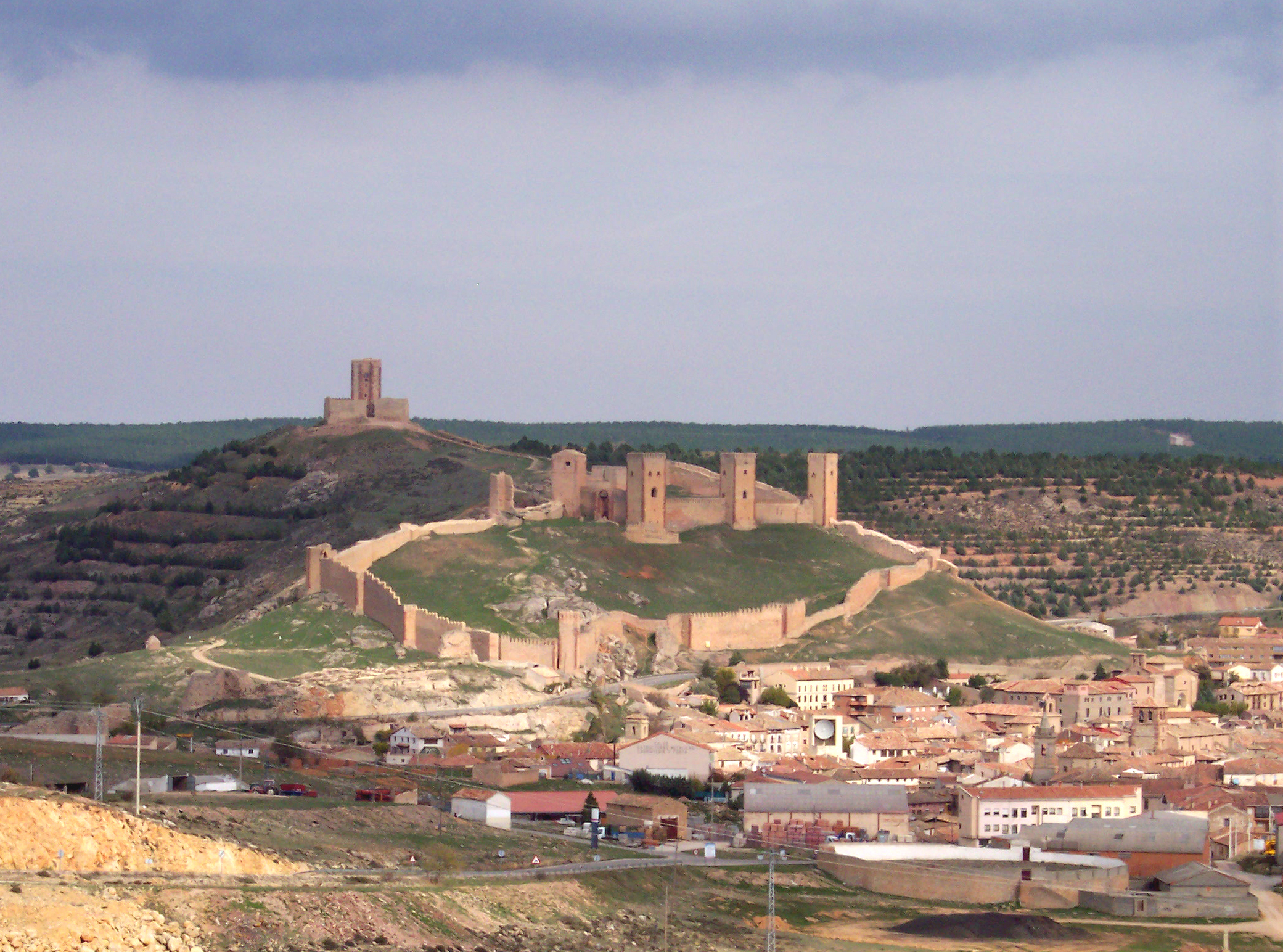|
Molina De Aragón
Molina de Aragón is a municipality located in the province of Guadalajara, Castile-La Mancha, Spain. According to the 2009 census (INE), the municipality had a population of 3,671 inhabitants. It holds the record (−28.2 °C) for the lowest temperature measured by a meteorological station in Spain. It was the seat of the taifa of Molina, a Moorish independent state, before it was reconquered by the Christians of Alfonso I of Aragon in 1129. On 21 April 1154 Manrique Pérez de Lara issued a sweeping ''fuero'' to the town of Molina, which he was building into a semi-independent fief.Simon Barton, ''The Aristocracy in Twelfth-century León and Castile'' (Cambridge: Cambridge University Press, 1997), 265. He and his descendants claimed to rule Molina ''Dei gratia'' ("by the grace of God"). Molina is also the type location of the carbonate mineral aragonite. Main sights *Medieval alcazar (10th–11th centuries), the largest in the province *Roman bridge (''Puente Viejo'') *Co ... [...More Info...] [...Related Items...] OR: [Wikipedia] [Google] [Baidu] |
List Of Sovereign States
The following is a list providing an overview of sovereign states around the world with information on their status and recognition of their sovereignty. The 206 listed states can be divided into three categories based on membership within the United Nations System: 193 UN member states, 2 UN General Assembly non-member observer states, and 11 other states. The ''sovereignty dispute'' column indicates states having undisputed sovereignty (188 states, of which there are 187 UN member states and 1 UN General Assembly non-member observer state), states having disputed sovereignty (16 states, of which there are 6 UN member states, 1 UN General Assembly non-member observer state, and 9 de facto states), and states having a special political status (2 states, both in free association with New Zealand). Compiling a list such as this can be a complicated and controversial process, as there is no definition that is binding on all the members of the community of nations concerni ... [...More Info...] [...Related Items...] OR: [Wikipedia] [Google] [Baidu] |
Manrique Pérez De Lara
Manrique Pérez de Lara (died 1164) was a magnate of the Kingdom of Castile and its regent from 1158 until his death. He was a leading figure of the House of Lara and one of the most important counsellors and generals of three successive Castilian monarchs: Alfonso VII (1126–57), Sancho III (1157–58) and Alfonso VIII (1158–1214). Parentage Manrique's father was Pedro González de Lara (died 1130). Of Pedro's rule and Manrique's succession to his position of honour and leadership in the ''Reconquista'', a contemporary writes: He took after his father in everything that he did. His father was Count Pedro of Lara, who ruled his own land for many years. The son also follows in all his father's footsteps. Still in the flower of youth, but enriched with honour and respected by the Emperor as is his nature, he was the upholder of the law, the worst scourge of the Moors. Manrique's mother Eva is of unknown parentage, but had previously been married to count García Ordóñez. O ... [...More Info...] [...Related Items...] OR: [Wikipedia] [Google] [Baidu] |
Mediterranean Climate
A Mediterranean climate (also called a dry summer temperate climate ''Cs'') is a temperate climate sub-type, generally characterized by warm, dry summers and mild, fairly wet winters; these weather conditions are typically experienced in the majority of Mediterranean-climate regions and countries, but remain highly dependent on proximity to the ocean, altitude and geographical location. This climate type's name is in reference to the coastal regions of the Mediterranean Sea within the Mediterranean Basin, where this climate type is most prevalent. The "original" Mediterranean zone is a massive area, its western region beginning with the Iberian Peninsula in southwestern Europe and coastal regions of northern Morocco, extending eastwards across southern Europe, the Balkans, and coastal Northern Africa, before reaching a dead-end at the Levant region's coastline. Mediterranean climate zones are typically located along the western coasts of landmasses, between roughly 30 and 45 ... [...More Info...] [...Related Items...] OR: [Wikipedia] [Google] [Baidu] |
Semi-arid Climate
A semi-arid climate, semi-desert climate, or steppe climate is a dry climate sub-type. It is located on regions that receive precipitation below potential evapotranspiration, but not as low as a desert climate. There are different kinds of semi-arid climates, depending on variables such as temperature, and they give rise to different biomes. Defining attributes of semi-arid climates A more precise definition is given by the Köppen climate classification, which treats steppe climates (''BSk'' and ''BSh'') as intermediates between desert climates (BW) and humid climates (A, C, D) in ecological characteristics and agricultural potential. Semi-arid climates tend to support short, thorny or scrubby vegetation and are usually dominated by either grasses or shrubs as it usually can't support forests. To determine if a location has a semi-arid climate, the precipitation threshold must first be determined. The method used to find the precipitation threshold (in millimeters): *multiply by ... [...More Info...] [...Related Items...] OR: [Wikipedia] [Google] [Baidu] |
Oceanic Climate
An oceanic climate, also known as a marine climate, is the humid temperate climate sub-type in Köppen classification ''Cfb'', typical of west coasts in higher middle latitudes of continents, generally featuring cool summers and mild winters (for their latitude), with a relatively narrow annual temperature range and few extremes of temperature. Oceanic climates can be found in both hemispheres generally between 45 and 63 latitude, most notably in northwestern Europe, northwestern America, as well as New Zealand. Precipitation Locations with oceanic climates tend to feature frequent cloudy conditions with precipitation, low hanging clouds, and frequent fronts and storms. Thunderstorms are normally few, since strong daytime heating and hot and cold air masses meet infrequently in the region. In most areas with an oceanic climate, precipitation comes in the form of rain for the majority of the year. However, some areas with this climate see some snowfall annually during winter. M ... [...More Info...] [...Related Items...] OR: [Wikipedia] [Google] [Baidu] |
Tordelpalo
Tordelpalo is a hamlet located in the municipality of Molina de Aragón, in Guadalajara province, Castilla–La Mancha, Spain. As of 2020, it has a population of 6. Geography Tordelpalo is located 148km east of Guadalajara, Spain Guadalajara (, ) is a city and municipality in Spain, located in the autonomous community of Castilla–La Mancha. It is the capital of the Province of Guadalajara. Lying on the central part of the Iberian Peninsula at roughly metres above sea .... References Populated places in the Province of Guadalajara {{CastileLaMancha-geo-stub ... [...More Info...] [...Related Items...] OR: [Wikipedia] [Google] [Baidu] |
Cubillejo Del Sitio
Cubijello del Sitio is a district in the Spanish municipality of Molina de Aragon of the province of Guadalajara Description The town belongs to the Guadalaran province of the Molina de Aragon, which itself belongs to the autonomous community of Castilla-La Mancha. The town has a population of 11 people. It was once referred to as "Cubillejo del Sicio". Monuments * Pairón de San Juan Bautista, a 17th century work, of which a reproduction now exists in the barrio de Salamanca of Madrid. * Fuente de 1932. * Iglesia de San Ildefonso, a 16th century Church. References * Wikimedia Commons Wikimedia Commons (or simply Commons) is a media repository of free-to-use images, sounds, videos and other media. It is a project of the Wikimedia Foundation. Files from Wikimedia Commons can be used across all of the Wikimedia projects in ... has a category relating to Cubillejo del Sitio. {{coord, 40, 53, N, 1, 48, W, display=title, region:ES_type:city_source:GNS-enwiki ... [...More Info...] [...Related Items...] OR: [Wikipedia] [Google] [Baidu] |
Cubillejo De La Sierra
Cubillejo de la Sierra is a small village in the municipality of Molina de Aragón, in the province of Guadalajara (Spain). It has a population of 51 inhabitants (INE 2016). Villages close to Cubillejo de la Sierra are Campillo de Dueñas Campillo de Dueñas is a municipality located in the province of Guadalajara, Castile-La Mancha, Spain, near the source of the river Piedra. According to the 2004 census (INE INE, Ine or ine may refer to: Institutions * Institut für Nukle ... and La Yunta. Within the municipality, the highest peak is Pico del Aguila, at 1444 metres. Monuments * Ermita de la Vega hermitage. * Pairón de la Virgen del Buen Suceso. * Pairón de las Ánimas References Bibliography * Heredia, F.J.; Marco, J.A., and Sanz, C. Cubillejo de la Sierra, historia, arte y sociedad. Ediciones Aache. Guadalajara, 2002. Municipalities in the Province of Guadalajara {{Spain-geo-stub ... [...More Info...] [...Related Items...] OR: [Wikipedia] [Google] [Baidu] |
Anchuela Del Pedregal
Anchuela del Pedregal is a hamlet located in the municipality of Molina de Aragón, in Guadalajara province, Castilla–La Mancha, Spain. As of 2020, it has a population of 12. Geography Anchuela del Pedregal is located 148km east-northeast of Guadalajara, Spain Guadalajara (, ) is a city and municipality in Spain, located in the autonomous community of Castilla–La Mancha. It is the capital of the Province of Guadalajara. Lying on the central part of the Iberian Peninsula at roughly metres above sea .... References Populated places in the Province of Guadalajara {{CastileLaMancha-geo-stub ... [...More Info...] [...Related Items...] OR: [Wikipedia] [Google] [Baidu] |
Geopark
A geopark is a protected area with internationally significant geology within which sustainable development is sought and which includes tourism, conservation, education and research concerning not just geology but other relevant sciences. In 2005, a European Geopark was defined as being: "a territory with a particular geological heritage and with a sustainable territorial development....the ultimate aim of a European Geopark is to bring enhanced employment opportunities for the people who live there." Today the geopark is virtually synonymous with the UNESCO geopark, which is defined and managed under the voluntary authority of UNESCO's International Geoscience and Geoparks Programme (IGGP). UNESCO provides a standard for geoparks and a certification service to parks that apply for it. The service is available to member states of UNESCO. This list is not the same as the member states of the United Nations. Membership in the UN does not automatically imply membership in UNESCO ... [...More Info...] [...Related Items...] OR: [Wikipedia] [Google] [Baidu] |
Castle Of Molina De Aragón
The Castle of Molina de Aragón (also called ''alcázar'' or '' alcazaba'') is a fortification in Molina de Aragón, Castile-La Mancha, Spain. It was declared ''Bien de Interés Cultural'' in 1931. It is located on a hill commanding the surrounding valley, and is formed by an external line of walls with four gates and numerous towers, which defends the internal fortress. The latter has six towers, of which four are currently in good conditions. Originally, the line of towers included a village. It originated as a Moorish fortress (10th-11th century), built over a pre-existing Celtiberian castle. The fortress was used as residence of the lords of the taifa of Molina. El Cid resided here when he was exiled from Castile. In 1129 it was conquered from the Moors by Alfonso I of Aragon Alfonso I (''c''. 1073/10747 September 1134), called the Battler or the Warrior ( es, el Batallador), was King of Aragon and Navarre from 1104 until his death in 1134. He was the second son of K ... [...More Info...] [...Related Items...] OR: [Wikipedia] [Google] [Baidu] |





